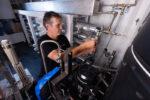How manufacturers can prepare for the ESPR
www.thinkstep-anz.com Image by Dinh Khoi Nguyen from Pixabay. As global sustainability regulations evolve, New Zealand manufacturers must stay ahead of the curve to maintain their competitive edge, especially with upcoming policies like the European Union’s Ecodesign for Sustainable Products Regulation (ESPR). But what is the ESPR, and how can manufacturers in New Zealand prepare for it? What is the ESPR? The ESPR is a new EU policy aimed at making products more sustainable and circular throughout their lifecycle, supporting the EU’s 2050 climate goals. The ESPR applies to products sold within the EU, setting specific sustainability requirements for design, use and disposal. It applies to most products sold in the EU, except for some like food and medicines. Non-compliant products may face fines or bans. Although it took effect in July 2024, the detailed rules will be developed over the next year. The regulation aims to make products more durable, reusable, repairable, and recyclable, while banning the destruction of unsold goods like electronics and textiles. A digital product passport will also be required, giving consumers direct access to sustainability data and exposing brands to greenwashing claims under the Green Claims Directive. Why should New Zealand manufacturers pay attention to ESPR? For manufacturers exporting to the EU or intend to: Failure to prepare for the regulations could result in loss of market access, fines, or even prosecution. Your products will face stricter comparisons on sustainability and circularity, which could impact your market share positively or negatively. Even if your business doesn’t currently export to the EU, the trends set by the ESPR are likely to influence regulations and purchasing decisions in other markets. As supply chains globalise, multinational corporations may enforce ESPR-style standards on all their suppliers, no matter where they are located. With more sustainability and […]










